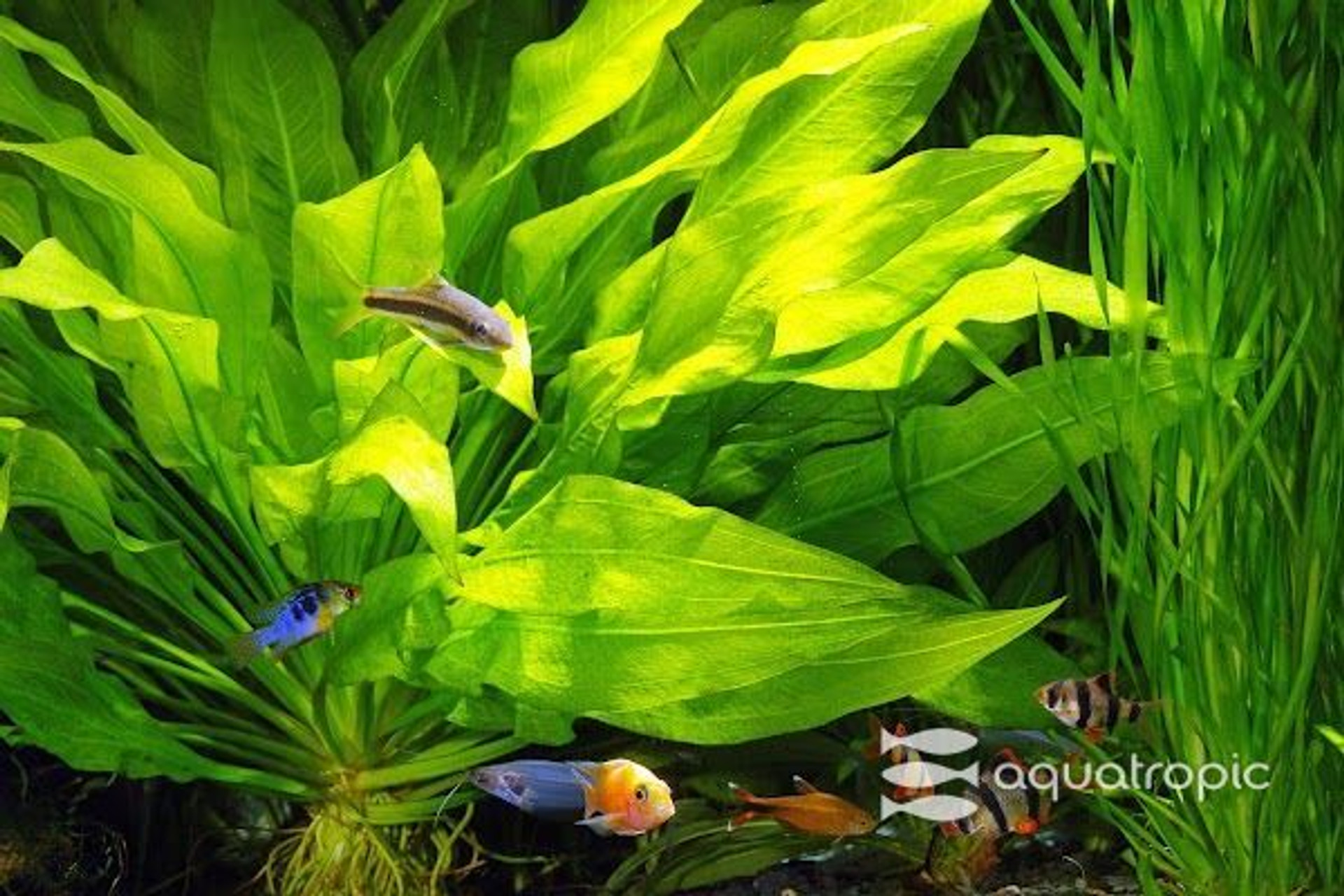Echinodorus bleheri

Echinodorus grisebachii 'bleheri,' named after the German botanist August Heinrich Grisebach, is one of a handful of species known commonly as the Amazon Sword. This broad-leafed sword plant has been a long-time fixture in planted aquariums and is one of the most ubiquitous plants in the aquarium hobby. As the common name suggests this sword plant finds its roots in South America growing in streams and lake edges as well as sprouting up in saturated sandy soil banks from Paraguay to Colombia and throughout the Amazon Rain Forest. E. bleheri prefers warm, slow moving, slightly acidic water but can tolerate a pH range of 5.5 - 8.5, temperatures ranging 64 - 86°F (18 - 30 °C) and hardness from 0 - 18 KH. Ranging in height from 4 - 22 inches (10 - 60cm) the long lanceolate leaves (narrow oval that tapers to a point at both ends) produced by this Amazon sword can flourish in high and low light aquariums. New growth sprouts from the center of the rosette (center of the base of the plant) fanning out to form a luxurious dome of long lime green leaves. Propagation takes place on a spike-like stem producing daughters through inflorescence that develop leaves and roots of their own ready to be planted and can produce delicate white flowers once it breaks the water’s surface. Another method of propagation is through division of the rosette on a mature and healthy specimen. These towering plants and their compact rosette growth patters can be used to obfuscate the equipment in an aquarium, line the background of their aquascape, or show off their radiance as a center piece. Echinodorus benefit greatly from the addition of CO2 but do not require it for happy and healthy growth; however, a deep, nutrient rich substrate fertilized with iron is a must for optimal growth. When planting sword plants it is important to ensure they are not buried too deep. Cover the roots until only the root crown (where the roots meet the stems) are exposed, enough to hold the plant down but plenty of space for the stems to breath. If the stem is buried too deep this will likely lead to bruising and damage that will cut off circulation to the plants leaves which can kill the plant.